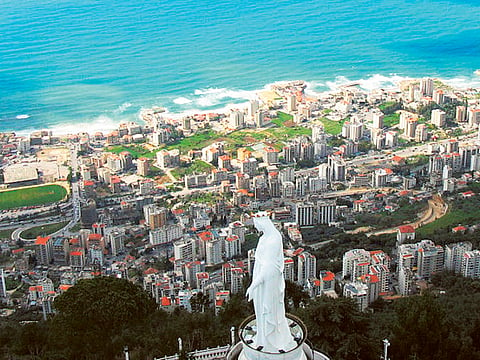Lebanon: A century after Sykes-Picot
Lebanon was caught in a string of wars because Syria never reconciled itself to its creation

Beirut: For nearly a century, academic works touted the analysis that Western powers “created artificial nations” in the Eastern Mediterranean, allegedly because Syria, Lebanon and Palestine were deprived of historical legacies.
For just as long, Arab nationalists and Islamists alike focused on the “Sykes-Picot order”, and argued that the time was long overdue to erase the 1916 accord among two leading colonial powers that divided the region to serve their narrow interests.
Beyond simplified analyses, critical assessments of the agreement overlooked the notion that Lebanon (as well as Syria and Palestine) were not “artificial creations” but, on the contrary, benefited from the deal to join the nation-state system, still the most successful business model that functioned, protected citizens, and allowed for the creation of wealth even if the major powers sought to protect oil resources and communication lines.
Lebanon came into existence in 1920 and gained full independence from France in 1943 though historians perceived wartime alliances that emerged throughout the area with fear.
That was natural given nearly 600 years of Ottoman occupation, though the Arab Revolt that mobilised hundreds of thousands fell victim to local ambitions as Sharif Hussain sought recognition of his “Arab Kingdom”, which neither Britain nor France accepted.
It was then that Sykes-Picot came into being and, in the words of Lebanon’s pre-eminent historian, Kamal Salibi, “France gave up her claim to the vilayat [province] of Mosul in return for a major share in … the Iraq Petroleum Company … [and] direct control over the coastal parts of the vilayat of Aleppo and its share of the vilayet of Beirut.”
This was, of course, imperial perfidy that, in the words of George Antonius, stood as “a shocking document. [Sykes-Picot] is not only the product of greed at its worst, that is to say, of greed allied to suspicion and so leading to stupidity, it also stands out as a startling piece of double-dealing”. Still, for Paris, the agreement defined territories it claimed in Syria and along its Mediterranean coastline.
Lebanon, perhaps the lone success of the 1916 accord, was nevertheless caught in a string of wars that crippled its political institutions not because of any demographic shifts that favoured a growing Muslim population — even if some of that was accurate — but, far more important, because Syria never reconciled itself to its creation as an independent state.
For decades, Syrian nationalists believed that Lebanon was an integral part of their country, sent their military to occupy it in 1976 — remained in occupation for nearly three decades — and even claimed that the Shebaa Farms in southern Lebanon were part of Syria.
A century after Sykes-Picot, Middle Eastern borders remained volatile. Syrian nationalists continue to call for unity schemes to replace the imperialist legacy. Most recently, Daesh said it wanted to “smash Sykes-Picot” when it established their so-called Islamic caliphate state on territory it captured in Iraq and Syria in 2014. In a prophetic 2014 essay, Jihad Al Zein lamented in his Al Nahar column that “practically speaking, Lebanon has lost the Sunni northern coast and the Shiite northern Bekaa”.
If one wanted a wider symbolic image, it would be this: only Mount Lebanon and the area of Ashrafieh in Beirut remain effectively a part of Lebanon politically. Syria’s national movement has effectively retaken all those regions forcibly lopped off by the French imperial power and joined to “Greater Lebanon”.He concluded his prescient essay by stating: “We do not wish to be annexed to the wider Syrian entity. We want to remain within ‘Greater Lebanon’.”
Sign up for the Daily Briefing
Get the latest news and updates straight to your inbox


